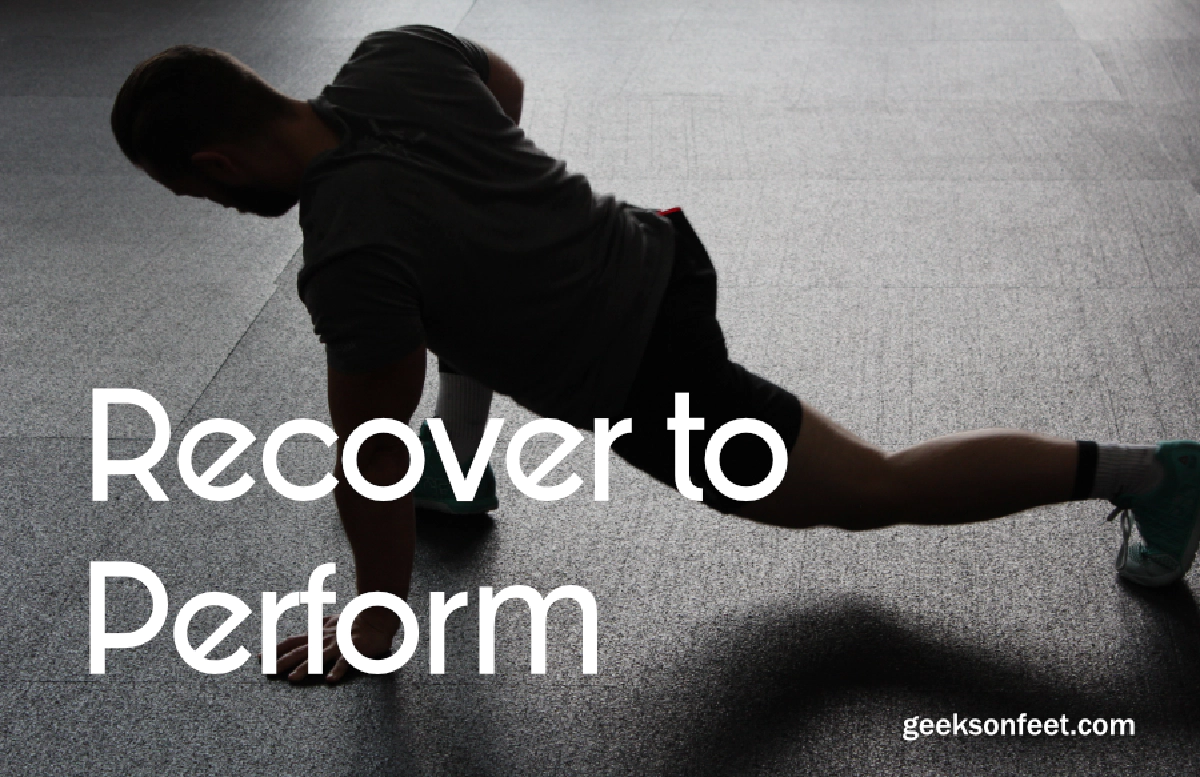
In our previous article on Optimizing training with RPE scale, it has been discussed at length on how to train with enough stimulus, while not overtraining. One of the important parts to avoid overtraining is getting better at recovery. If you want to recover fully and keep the training structured over months, a short cool-down run, or a 5-minute post run stretching session needs to be rethought. Recovery is a science by itself and there is a lot of art involved too. The question to ask is what are the recovery strategies out there. How effective are they with me?
In the overall recovery spectrum, there are two major strategies, each of which has many techniques that runners can use.
This article summarizes all the major post-workout recovery techniques which are effective and useful for runners. Series of articles are planned to follow this article.
Traditionally Stretching has been used as an important tool for recovery and performance. The effectiveness of stretching for recovery is still under research. Stretching works by lengthening the muscles to an optimal state and thereby improving range of motion, and reducing soreness after activity.
Dehydration is inevitable in any demanding physical activity. Loss of water, and electrolytes like Sodium, Potassium will affect the recovery process. So effective hydration is key to recover quickly. The amount of hydration required is highly individual.
Despite the water and salt intake during the workout or a race, a certain level of dehydration happens in events like Marathons. Drinking water alone is not enough to rehydrate quickly. Taking drinks with carbohydrates, and sodium chloride allows faster recovery. Glucose is the most effective Carbohydrate.
Sleep is the single best recovery tool for runners. During sleep, recovery hormones are at their highest activity. Protein synthesis is also highest during sleep, which means muscles rebuild the damaged portions at the highest rate. Also, processing new running skills takes place during sleep. So any new skill or learned muscle pattern is reinforced during sleep. On the contrary, when we don’t get adequate sleep, our motor responses get slower and can compromise our running form, and cause bad neuro-muscular habits.
Some of the techniques can be used for sleep as recovery tool:
All of us would have heard of the golden hour, which is the first hour after a hard workout, which is the glycogen synthesis window or recovery window. Nutrition with carbohydrates and sodium are important during this window. If the workout involves strength training, then recovery nutrition should include protein too.
Beyond the golden hour, the nutrition plan needs to include a healthy and balanced dose of macronutrients; carbohydrates, protein, and fats (40%,30%,30%). Based on the type of workout, you could change the mix of macronutrients, more protein during strength days, while more carbs after demanding endurance activities. Taking protein before the bed stimulates protein synthesis better and helps rebuild the muscles more effectively.
Supplements and recovery is a complex topic, which will be covered in a future article. As far as the basics go, while a balanced diet supplies essential macronutrients, getting the right micro-nutrients such as minerals and vitamins can be tricky, and this is where supplements can help. Multi-vitamins, mineral supplements such as Iron, Calcium, Zinc, and Magnesium are essential to recovery.
Runners and inflammation go hand in hand. Cold baths and the application of ice help reduce inflammation and help in faster recovery. It works by restricting the blood flow. However, inflammation is a natural process for the body to adapt to stress, hence immediately stopping inflammation caused by workout shouldn’t be the goal. It is recommended that the application of cold is only important when there are demanding workouts to be done in succession. Such as simulating weekend doubles (two long runs on Saturday and Sunday). Application of Ice helps when there is pain.
Application of heat by using Steam or warm water baths can also help in recovery. Application of heat increases blood circulation and loosens stiff muscles, and facilitates recovery. However, application of heat is not recommended when there is inflammation.
Massage is a very popular therapy for recovery among runners. Massage increases blood circulation and it also has a positive effect on the parasympathetic nervous system (PSNS) and thereby enhances recovery. Massage can alleviate trigger points, reduces spasms in muscles. It also removes adhesions, allowing for a better range of motion in muscles.
Massage is best done during rest weeks or easy weeks as it can cause soreness and can interfere with training. Self-massage helps you release adhesions, knots, and trigger points in the soft tissues and is also an important part of recovery and injury prevention. Self massage using a foam roller, massage stick and a hard tennis ball can be administered daily.
Over the next few weeks, a series of articles are planned which will go into detail about each of these recovery techniques and how runners can effectively use them.
Prepared by Team GeeksOnFeet for the love of running
If you are a running enthusiast, follow us on our social media channels @geeksonfeet on Twitter, and GeeksOnFeet on Instagram and Facebook for updates.